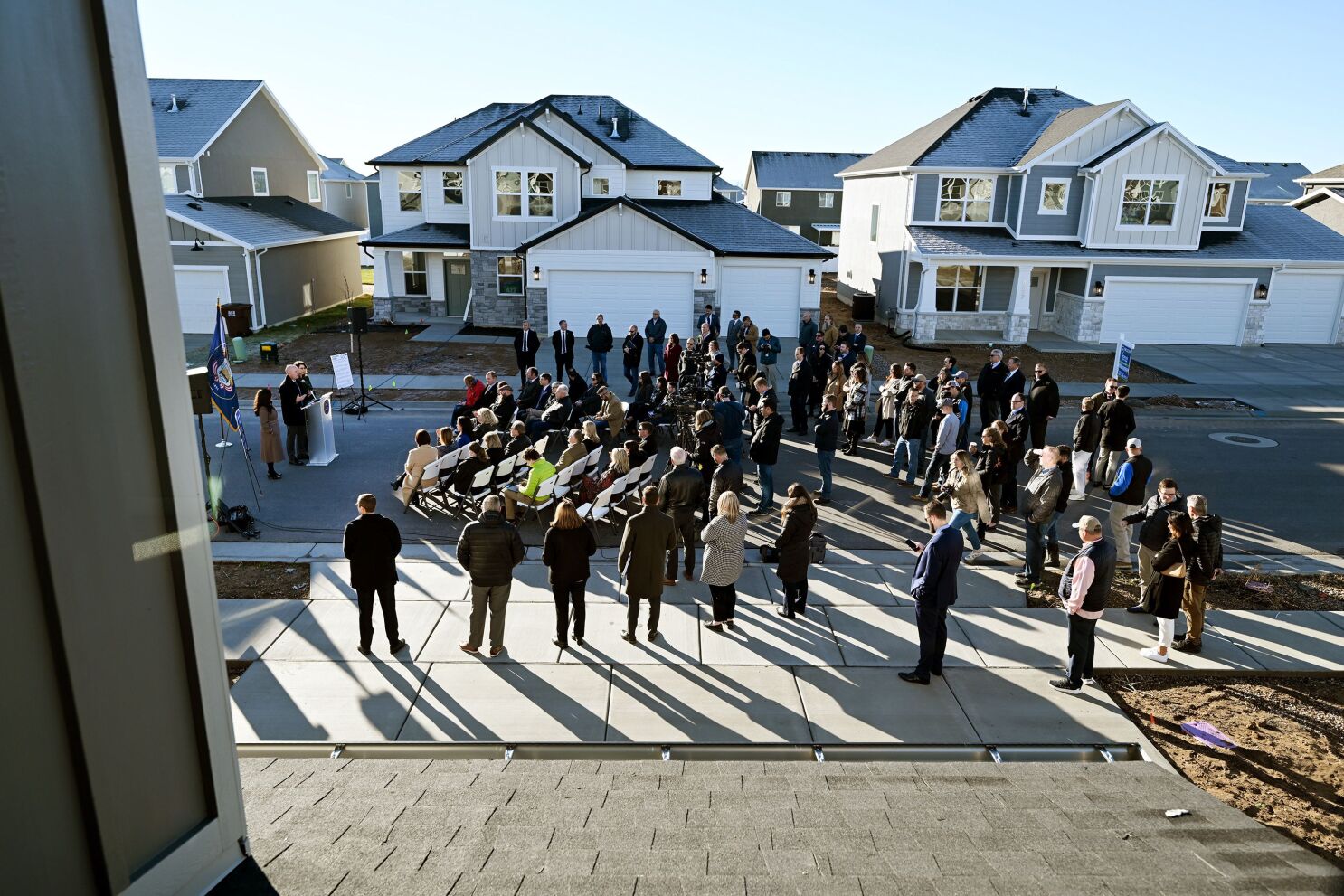This op-ed was originally published in the Standard-Examiner on December 14, 2023.
Gov. Spencer Cox recently unveiled the “Utah First Homes” program, which has a goal of building 35,000 new starter homes by 2028.
In a state with a housing shortage and skyrocketing prices, 35,000 homes hitting the market would be extremely welcome. Furthermore, an emphasis on starter homes is well-placed, as there is strong demand for homes that middle-class earners like police officers and firefighters can afford.
However, before the first shovel can hit the dirt on the first starter home, a few key things must happen.
Starter home needs to be defined
If there’s going to be a statewide effort to build more starter homes, an agreed-upon definition is essential. Starter homes are generally understood to be smaller homes on smaller lots. A classic example would be a three-bed, two-bath, single-family home under 1,500 square feet on a one-eighth-acre lot. If these simple home and lot dimensions are used as a baseline, then policymakers can better understand how to remove barriers to starter home construction.
Starter homes need to be legalized
Unfortunately, the starter home defined above would be illegal to build in cities throughout the state. The reason is frustrating, but simple. The government, via zoning regulations, almost universally prevents property owners from building on one-eighth-acre lots. Further hurting starter home production are other zoning barriers, such as requirements that homes be 20-plus feet apart, 20-plus feet from the road, and limitations on land subdivision.
Financial reality also reveals that smaller lots need to be legalized for starter homes to exist. For example, a half-acre of land in Utah’s population centers can cost $300,000 or more. With land costs this high, property owners need the freedom to create homes on smaller lots.
Local officials provide regulatory relief
Although the housing crisis and lack of starter homes is a statewide problem, mayors, city councils, planning commissioners and staff are in the primary position to make starter homes become a reality. Zoning ordinances will need to be written, zoning maps updated and other critical details accounted for.
For example, even though new starter homes are a net economic benefit in the long term, some cities might struggle with the up-front costs associated with making upgrades to the water, sewer or road system. Cities have multiple options for how they might handle this situation, such as using funds generated by impact fees, borrowing funds or using reserves.
If local officials can make the necessary moves, they would deserve credit for helping our family members, friends and co-workers have the opportunity to own property and a home.
Embrace of free enterprise
When gas prices spiked, most understood the solution. There were calls to “drill, baby, drill” or otherwise bring more gasoline to the market. In other words, increase the supply of gas so that prices stabilize or drop.
The solution for Utah’s skyrocketing housing prices and lack of starter homes is the same. We need to remove government barriers and let the market build enough homes to meet demand. If we don’t, our shortage will worsen. As it worsens, the chorus of those asking governments for subsidies will increase. The trouble with subsidy proposals is that they cannot work in the long term. Not only would a surge in government spending not address the underlying issue, it would also require a staggering level of taxation. Need proof? Check California’s tax rates, home prices and out-migration numbers.
Homebuilders signal they will build
While it would be helpful if homebuilders showcased their willingness to build starter homes, we can look at places outside of Utah as case studies. For example, Houston, Texas — which has no zoning whatsoever and allows for 1,400-square-foot lots — has a variety of starter homes and improved housing affordability. Ultimately, what aspiring homeowners need are options, from working with their own builder and architect to choosing from a variety of starter-home designs created by a variety of homebuilders.
The pieces come together
If local government acts in the deregulatory, free market ways described here, then the goal of getting 35,000 starter homes built could be met or even exceeded — all at no cost to the taxpayer.






